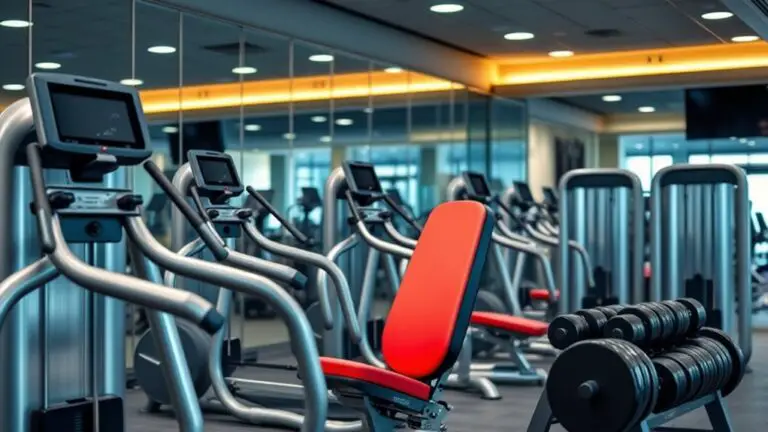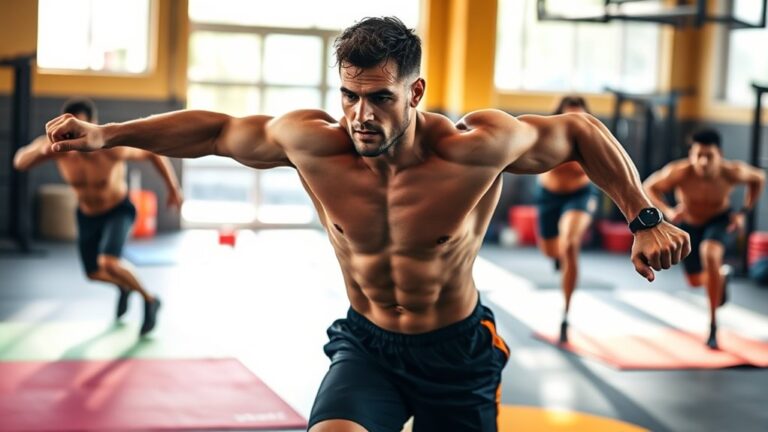The Best CrossFit Workouts for Strength and Endurance
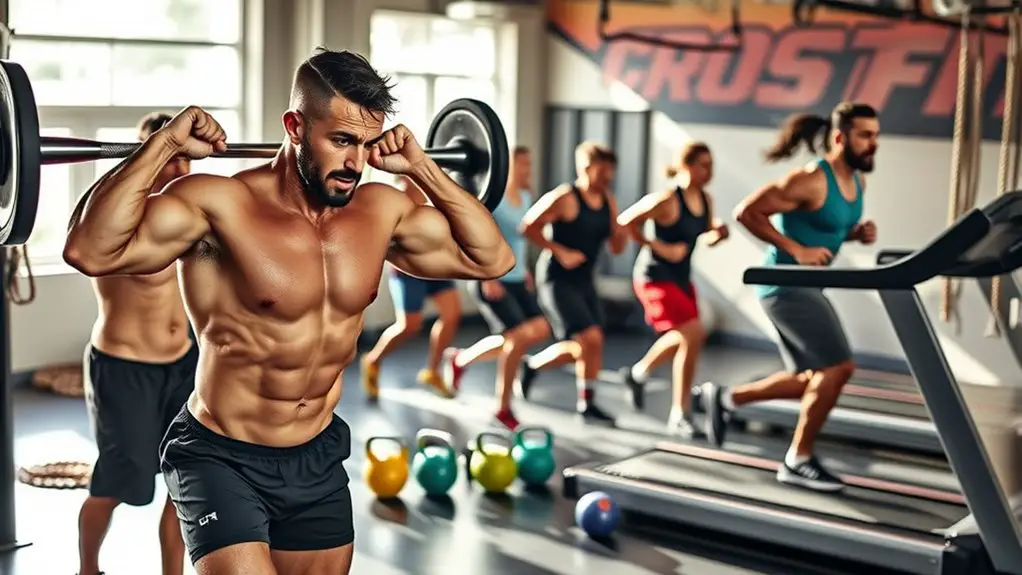
For building both strength and endurance, CrossFit workouts are your go-to option. Focus on functional movements like squats, deadlifts, and high-intensity intervals, such as rowing or burpees. Combine powerlifting days with stamina workouts like a 20-minute AMRAP of bodyweight exercises. Consistency is key, along with proper technique and recovery. Setting specific goals will keep you motivated. Keep exploring to uncover the best combinations of strength and endurance training tailored for your fitness journey.
Understanding CrossFit: The Basics of Strength and Endurance
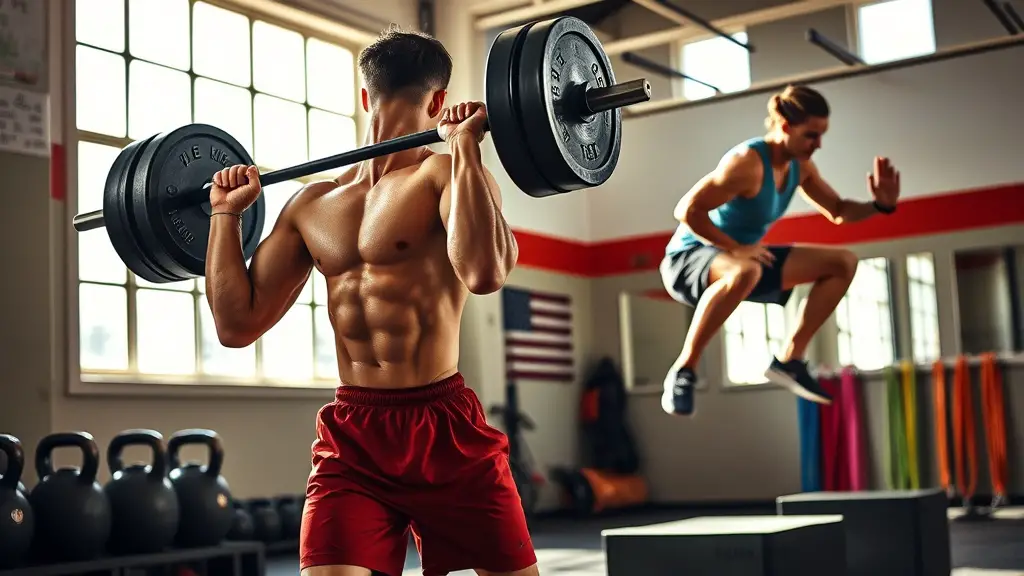
When you plunge into CrossFit, you’ll quickly discover that it’s not just about lifting heavy weights or running long distances; it’s a unique blend of strength and endurance training designed to push your limits. At its core, understanding CrossFit means grasping its fundamental principles. These principles emphasize functional movements that engage multiple muscle groups, promoting overall strength and stamina.
Strength fundamentals in CrossFit focus on building a solid foundation through exercises like squats, deadlifts, and presses. These movements enhance your power while improving your overall fitness.
Simultaneously, endurance is developed through high-intensity workouts that challenge your cardiovascular system. You’ll find that combining these elements not only boosts your performance but also enhances your daily activities. Additionally, incorporating activities like jump rope can improve knee health while enhancing coordination and balance.
Embracing the CrossFit principles will help you evolve into a stronger, more resilient version of yourself, making every workout a step towards achieving your fitness goals.
The Importance of Functional Movements in CrossFit
Functional movements are at the heart of CrossFit, serving as the building blocks for both strength and endurance. These movements mimic everyday activities, enhancing your body’s ability to perform daily tasks with ease. By focusing on functional fitness, you’re not just lifting weights; you’re developing essential movement patterns that improve coordination, balance, and agility.
Incorporating exercises like squats, deadlifts, and presses into your routine helps you build a strong foundation. These compound movements engage multiple muscle groups, maximizing your workout efficiency. As you progress, you’ll notice improvements not only in your performance but also in your overall physical well-being.
Top CrossFit Workouts for Building Strength
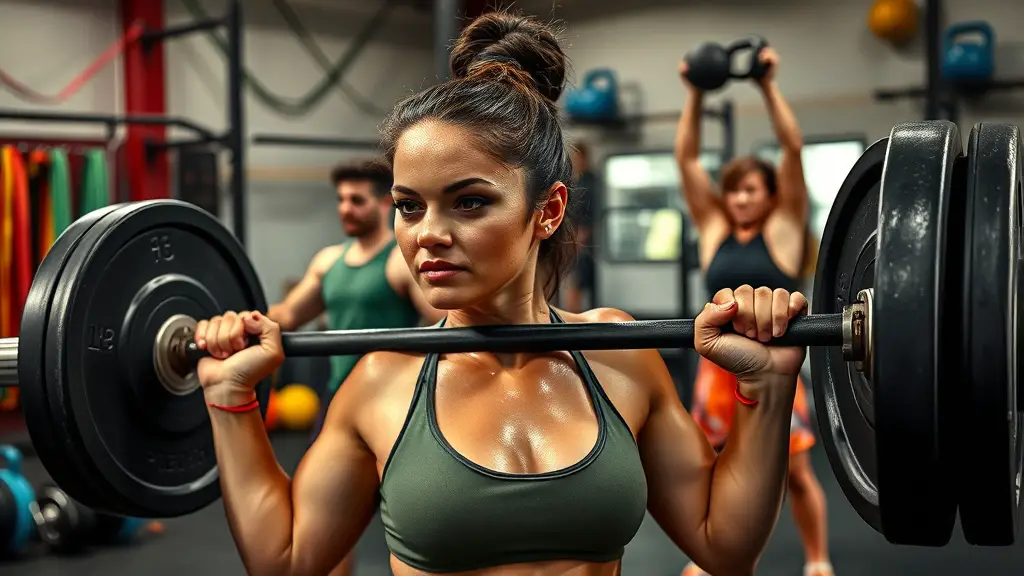
Building strength through CrossFit requires targeted workouts that challenge your body and push your limits. One of the best ways to achieve this is by incorporating strength training into your routine. Focus on power lifting movements like deadlifts, squats, and bench presses, which are foundational for building muscle and increasing overall strength.
A great workout to contemplate is the “CrossFit Total,” which includes a one-rep max for the squat, press, and deadlift. Another effective option is the “Bear Complex,” involving a series of barbell movements that build explosive power and strength simultaneously.
Don’t forget about high-intensity interval training (HIIT) to complement your strength sessions, as it helps with muscle endurance while still focusing on strength gains. Consistency is key, so challenge yourself regularly, track your progress, and celebrate the gains you make along the way.
Effective CrossFit Workouts to Enhance Endurance
To enhance your endurance in CrossFit, it’s essential to incorporate workouts that elevate your heart rate and challenge your stamina. Focus on endurance training through high-intensity interval training (HIIT) that alternates between short bursts of intense effort and periods of active recovery. For example, try a workout that combines rowing, burpees, and double-unders. This not only boosts your aerobic capacity but also builds mental toughness.
Incorporate longer, steady-state workouts like a 5K run or a 20-minute AMRAP (as many rounds as possible) of bodyweight exercises. These longer sessions help develop your endurance base, allowing you to push harder during intense WODs. Additionally, integrating skipping rope into your routine can serve as an effective method for improving cardiovascular health and enhancing overall fitness.
Combining Strength and Endurance: The Ultimate WODs
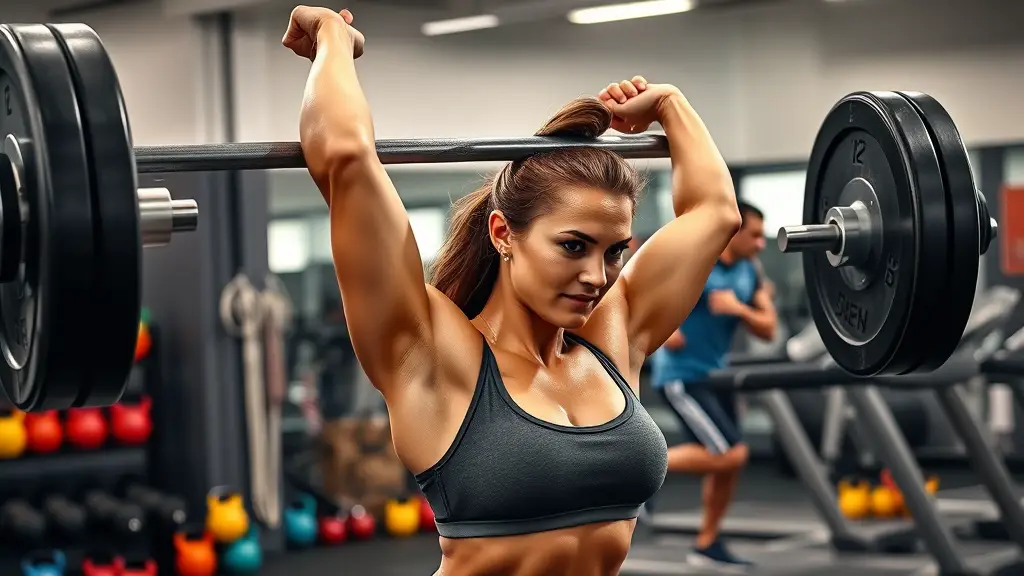
While strength and endurance might seem like separate fitness goals, combining them can lead to remarkable gains in your overall performance. Hybrid training is an effective approach to achieving this balance. By incorporating workout variations that challenge both your muscular and cardiovascular systems, you’ll maximize your fitness potential.
Consider workouts that blend heavy lifting with high-intensity cardio. For instance, you might perform a set of deadlifts followed by a short, intense sprint. This method not only builds strength but also enhances your stamina and recovery.
Blending heavy lifting with high-intensity cardio boosts strength, stamina, and recovery for optimal performance.
Another great option is the classic “EMOM” (Every Minute on the Minute) workout, where you alternate strength exercises with endurance-focused movements, like rowing or burpees. These combinations keep your heart rate elevated while promoting muscle growth.
Embrace these ultimate WODs, and you’ll find yourself not only stronger but also more resilient, ready to tackle any challenge that comes your way.
Tips for Optimizing Your CrossFit Training Sessions
To get the most out of your CrossFit training sessions, it’s crucial to focus on technique, prioritize recovery, and set specific goals. By honing your skills and allowing your body to rest, you’ll enhance both your strength and endurance. Let’s explore these key strategies to elevate your performance and keep you motivated.
Focus on Technique
Focusing on technique is essential for maximizing the benefits of your CrossFit training sessions, as proper form not only enhances performance but also reduces the risk of injury. Incorporate technique drills into your routine to reinforce effective movement patterns. Here’s a quick reference for your focus areas:
| Technique Drills | Movement Patterns |
|---|---|
| Squat form check | Overhead lifting |
| Deadlift posture | Kipping pull-ups |
| Clean and jerk mechanics | Box jump efficiency |
Prioritize Recovery Time
After honing your technique, the next step in optimizing your CrossFit training is to prioritize recovery time. Effective recovery strategies are vital for improving performance and preventing injuries. Make sure to schedule rest days into your routine; your muscles need time to repair and grow stronger. Incorporating active recovery, like light jogging or yoga, can enhance blood flow and speed up recovery. Also, focus on hydration and nutrition to fuel your body appropriately. Consider foam rolling and stretching to alleviate soreness and improve flexibility. Remember, recovery isn’t a luxury; it’s an essential part of your training. By prioritizing your recovery, you’ll boost your strength and endurance, making your CrossFit sessions more effective and enjoyable. Stay committed!
Set Specific Goals
Setting specific goals is essential for maximizing your CrossFit training sessions, as it gives you a clear direction and purpose. Start with goal setting by determining what you want to achieve—whether it’s increasing your lifting capacity, improving your endurance, or mastering a specific movement. Break these goals into smaller, manageable milestones to track your measurable progress. For example, if you aim to improve your squat, set a target weight to reach by a certain date. Keep your goals realistic and time-bound, allowing for adjustments as you advance. Regularly review your progress to stay motivated and make necessary changes to your training regimen. This structured approach will enhance your focus and drive, leading to greater success in your CrossFit journey.
Frequently Asked Questions
How Often Should I Do Crossfit for Optimal Results?
How often should you hit the CrossFit gym for ideal results? Aim for 3 to 5 sessions a week, balancing intensity with recovery. Your CrossFit frequency can greatly impact your progress, but don’t forget the importance of rest days. Incorporating recovery time allows your muscles to rebuild and strengthen, ensuring you avoid burnout or injury. Listen to your body—it’s key to pushing your limits while staying healthy and motivated on your fitness journey.
Can Beginners Safely Participate in Crossfit Workouts?
Yes, beginners can safely participate in CrossFit workouts! It’s essential to start with proper CrossFit modifications that cater to your fitness level. Focus on beginner techniques to build a solid foundation before tackling more intense movements. Listen to your body, and don’t hesitate to ask your coach for guidance. Remember, everyone starts somewhere, and with consistency and patience, you’ll see progress and enjoy the benefits of CrossFit in no time!
What Equipment Do I Need for Crossfit Training?
To get started with CrossFit training, you don’t need a ton of equipment. A quality barbell for barbell squats is essential, as it builds strength and stability. You’ll also want a kettlebell for kettlebell swings, which enhance your endurance and core strength. Don’t forget a good pair of athletic shoes and a jump rope to add variety. With these basics, you’re ready to tackle your CrossFit journey and achieve your fitness goals!
How Can I Prevent Injuries During Crossfit Sessions?
To prevent injuries during your CrossFit sessions, you should focus on mobility exercises and proper warm-up routines. Start each workout with dynamic stretches to prepare your muscles and joints, enhancing your range of motion. Incorporate mobility exercises like hip openers and shoulder dislocates regularly. Listen to your body, and don’t push through pain. Prioritizing these practices will help keep you healthy, allowing you to enjoy your workouts and achieve your fitness goals.
Are There Nutritional Guidelines for Crossfit Athletes?
Like a finely-tuned machine, your body needs the right fuel to perform at its best. For CrossFit athletes, balancing macronutrient ratios is essential—aim for a mix of carbohydrates, proteins, and fats to support your energy and recovery. Don’t forget hydration strategies; staying hydrated helps maintain performance and prevents fatigue. Remember, what you eat and drink can make all the difference in your training, so prioritize nutrition for peak results!




